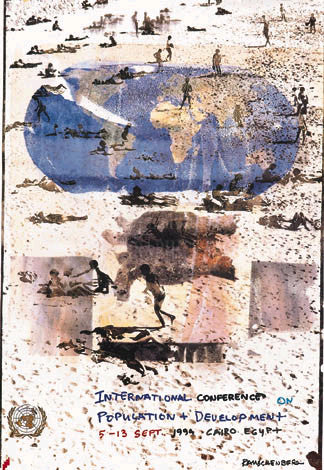CUNY/CISC Collaboration
The year that NNYN was formed, it entered into strategic alliance with City University of New York, the largest urban university in the United States. The purpose was to mutually support programs, publications, research, and educational initiatives that promote the awareness of the nature and urban ecology of New York City. NNYN made a substantial gift to CUNY on the occasion, in furtherance of those goals.
COURSE OFFERED ON NATURE IN NEW YORK
The collaboration led to creation of a course, for credit and non-credit, entitled The Nature of New York: Its Natural History and Environment, taught by CUNY professors, with visiting lectures from others. The course was offered in its first year to over 100 CUNY students, and was also made available to New York City High School Students through CUNY's “College Now” program and to members of the general public. It covered topics such as New York's geological origins and terrain, geography, hydrology and climate, and the vast array of plants and animals in local habitats. It also discussed ongoing environmental issues such as biodiversity, ecological consequences of introduced species and effects of urban sprawl and habitat fragmentation on wildlife. The course Nature in New York is still offered by CUNY’s School of Professional Studies as EAS 201, and has led many who would not have otherwise have done so to focus on New York’s environment.
EXPLORING THE NATURE OF NEW YORK
NNYN’s collaboration with CUNY also gave rise to a number of related activities, including creation of a web site to support the Nature of New York course. In conjunction with the course, an NNYN naturalist took students on field trips to a wide range of places in and around the City, from the Jamaica Bay Wildlife Refuge and Inwood Park to New Jersey's Greenbrook Sanctuary and Oakland Lake and Alley Pond in Queens, to observe migrating raptors, butterflies and birds, examine geological formations such as moraines, and discuss the unique composite biogeography of New York City as well as its ecological footprint. A rich collection of video clips taken during these field outings give a glimpse of the wide range of wildlife that can be found in New York. Field trips continue today to form an integral part of the CUNY course.
CUNY INSTITUTE FOR SUSTAINABLE CITIES
Another important fruit of the nonprofit’s work with CUNY and its gifts in support of that work was the creation of the CUNY Institute for Sustainable Cities (“CISC”), headed for many years by Projessor Willam Solecki, and today led by Professor Peter Marcotullio. CISC describes its mission as “realizing cities as part of the solution to global sustainability challenges,” explaining:
"By merging the science of sustainability with innovative public programming, we examine opportunities available to cities—and their residents—for proactive responses to on-going environmental change. We harness the potential of formal and informal means to inspire a new generation of environmental thinkers. In doing so, we seek to understand and influence the evolution of the urban environment, while connecting the CUNY community, decision makers and the general public to these critical issues."
Through the years, CISC has offered internships to students to engage in a variety of projects, including researching food production, processing, distribution, consumption and waste for the New York Region; examining the ecological services and functions of backyards in New York City; creating a report on water resources, climate change and green infrastructure initiatives in the Hudson Valley Region; and organizing public events to engage New York City residents in sustainability issues.





